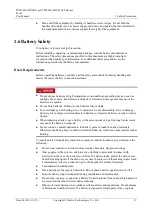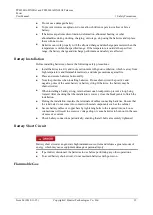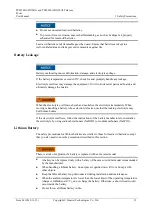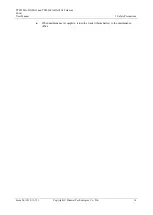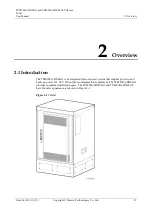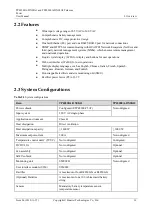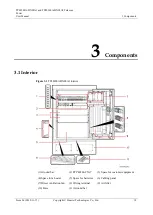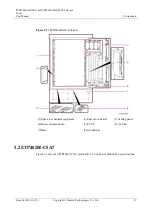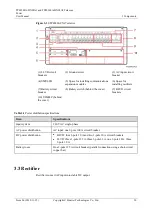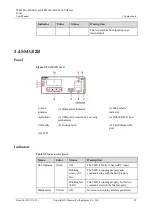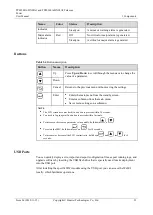
TP48200A-DX08A1 and TP48200A-DX08A2 Telecom
Power
User Manual
1 Safety Precautions
Issue 06 (2019-11-15)
Copyright © Huawei Technologies Co., Ltd.
8
Set a restricted area and eye-catching signs for working at heights to warn away irrelevant
personnel.
Carry the operation machinery and tools properly to prevent them from falling off and
causing injuries.
Personnel involving working at heights are not allowed to throw objects from the height to
the ground, or vice versa. Objects should be transported by tough slings, hanging baskets,
highline trolleys, or cranes.
Do not perform operations on the upper and lower layers at the same time. If unavoidable,
install a dedicated protective shelter between the upper and lower layers or take other
protective measures. Do not pile up tools or materials on the upper layer.
Ensure that guard rails and warning signs are set at the edges and openings of the area
involving working at heights to prevent falls.
Do not pile up scaffolding, springboards, or other sundries on the ground under the area
involving working at heights. Do not allow people to stay or pass under the area involving
working at heights.
Inspect the scaffolding, springboards, and workbenches used for working at heights in
advance to ensure that their structures are solid and not overloaded.
Dismantle the scaffolding from top down after finishing the job. Do not dismantle the
upper and lower layers at the same time. When removing a part, ensure that other parts
will not collapse.
Do not loiter when working at heights. Do not sleep at heights.
Any violations must be promptly pointed out by the site manager or safety supervisor
and the involved personnel should be prompted for correction. Personnel who fail to stop
violations will be forbidden from working.
Operators who violate the safety regulations are responsible for accidents caused. The
supervisor has to bear the responsibility accordingly.
1.5 Mechanical Safety
Hoisting Devices
Do not walk under hoisted objects.
Only trained and qualified personnel should perform hoisting operations.
Check that hoisting tools are available and in good condition.
Before hoisting objects, ensure that hoisting tools are firmly secured onto a load-bearing
object or wall.
Ensure that the angle formed by two hoisting cables is no more than 90 degrees, as
shown in the following figure.

















